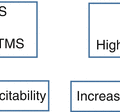© Springer International Publishing AG 2018
Stefano Masiero and Ugo Carraro (eds.)Rehabilitation Medicine for Elderly PatientsPractical Issues in Geriatricshttps://doi.org/10.1007/978-3-319-57406-6_5252. Cancer and Physical Activity
(1)
Rehabilitation Unit, Department of Neuroscience, University – General Hospital of Padua, Padua, Italy
52.1 Physical Activity and Cancer Prevention
The relationship between physical activity (PA) and tumor has been subject to many studies; one of the most studied malignancies is colon cancer.
PA may influence the development of colon cancer by acting on the energy balance, on hormone metabolism, and on insulin regulation, by reducing the exposure time to potential colon carcinogens, and by increasing the speed of intestinal peristalsis. PA can also modify a number of inflammatory and immune factors that are involved in the genesis of colon cancer [1].
More than 50 scientific papers have examined the association between colon cancer and PA, and many of these have found that adults who increase their PA, in intensity, duration, or frequency, can reduce the risk of 30–40% of colon cancer regardless of their body mass index. In addition, the greatest reduction in risk was in more active individuals [2].
The protective effect also appears to be higher in those who perform high-intensity activities, although the exact level of training has not been established. According to some authors, 30–60 min of moderate-intense daily PA has a protective effect against colon cancer [3, 4]. Whether PA has a protective effect on rectal cancer, adenomas, or recurrence of intestinal polyps, it is still a matter of debate (www.cdc.gov/nccdphp/dnpa/physical/pdf/PA_Fact_Sheet_Adults.pdf).
The scientific literature documented that both premenopausal and postmenopausal active women have a lower risk of developing breast cancer than sedentary ones. However, data on risk reduction percentages vary greatly among studies from 20 to 80% [2, 3, 5]. PA can prevent tumor development by lowering the levels of insulin and insulin-like growth factor 1 (IGF-1), improving the immune response, and contributing to the maintenance of an adequate body weight [4, 6, 7].
The risk of breast cancer would be inversely correlated with the increase in the frequency and duration of physical exercise, and despite the fact that women who increased PA after menopause may experience a reduction in risk, it is better to engage in physical training during the whole life. Thirty to sixty minutes a day of exercise at moderate to high intensity are sufficient to reduce the risk of breast cancer [3, 8].
Several studies have examined the relationship between endometrial cancer risk and PA and found that physically active women have a 20–40% reduced risk of endometrial cancer [3]; this risk does not seem to vary by age [8]. Change in the body mass index (BMI), level of sex hormones (e.g., estrogens), and metabolism appears to be the main biological mechanisms that connect PA and endometrial cancer.
An inverse association between PA and lung cancer risk has also been hypothesized: the most active individuals have a 20% reduction in risk [3, 8]. High levels of PA would have a protective effect against cancer, but exercise is not able to counteract the negative effects of smoking or respiratory diseases [3, 9]. The relationship between PA and risk of lung cancer is less noticeable on women than it is on men [10].
52.2 Cancer and Physical Activity
Two observational studies examined the relationship between levels of PA before and after the diagnosis of colon cancer, demonstrating how the pre-diagnosis levels of PA were not related to survival after diagnosis. However, participants with higher levels of PA after diagnosis of nonmetastatic colorectal cancer had lower mortality. The biological mechanism for this association is still unknown; it was hypothesized that PA may decrease the tissue insulin and insulin-like growth factor (IGF) levels and increase IGF binding proteins, thus influencing their action on micrometastases [11].
Stay updated, free articles. Join our Telegram channel

Full access? Get Clinical Tree





